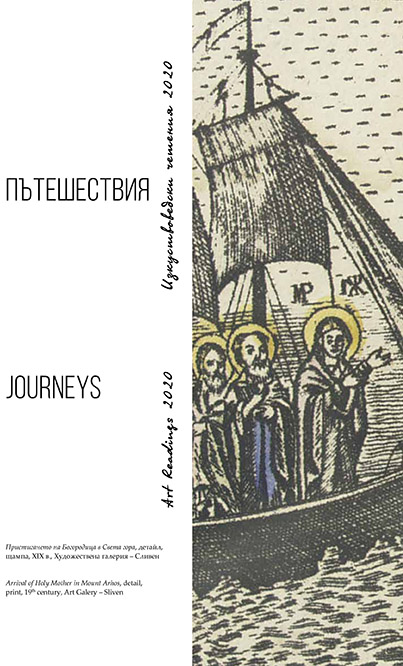Дo Йерусалим и обратно: топография и иконография на поклонничеството в Източното Средиземноморие (XVIII–XIX век)
To Jerusalem and Back: Topography and Iconography of Pilgrimage in the Eastern Mediterranean (18th–19th Century)
Author(s): Ivanka GergovaSubject(s): History, Fine Arts / Performing Arts, Modern Age, 18th Century, 19th Century, History of Art
Published by: Институт за изследване на изкуствата, Българска академия на науките
Summary/Abstract: The big canvasses called “Jerusalem icons” (Jerusalimija) by the Eastern Orthodox Slavs were at first topographic depictions of Jerusalem and the sacred places around it being sites of worship, sometimes with the inscription: Η ΑΓΙΑ ΠΟΛΙΣ ΙΕΡΟΥΣΑΛΗΜ ΚΑΙ ΤΑ ΠΕΡΙΧΩΡΑ ΑΥΤΗ. In the late 18th c. some new elements appeared in the complex composition which point out to other sacred places in the Eastern Mediterranean: the miraculous icon of the Holy Mother of God from the Kykkos Monastery in Cyprus, the Holy Mother of God of the Life-Giving Spring from Constantinople, the Mount Athos monasteries, Mount Sinai. There are relatively few similar examples that can be defined as total proskynetaria and they probably appeared made to special order of pilgrims. The Jerusalem icons in Bulgarian collections with depictions of St. John of Rila and his monastery and of St. St. Cyril and Methodius as well as the appearance of St. Sava of Serbia in canvases ordered by Serbian pilgrims are also interesting. The very road of pilgrims is marked by the port of Jaffa and the caravan of camels heading to the holy city of Jerusalem.
Journal: Изкуствоведски четения
- Issue Year: 2020
- Issue No: 1
- Page Range: 75-91
- Page Count: 17
- Language: Bulgarian
- Content File-PDF

